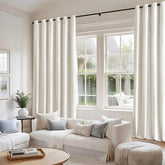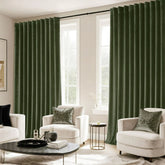Essential Tips for Choosing the Right Fabrics for Your Home.
When designing or refreshing your home, fabrics are one of the most impactful elements to consider. From sofas to curtains to accent pillows, the materials you select can shape the mood, style, and functionality of your space. By choosing the right fabrics, you can achieve the perfect balance between aesthetics, comfort, and practicality.

1. Understanding the Importance of Fabric
The fabric choices in your home affect more than just how your space looks—they also influence how it feels and functions. Each material has unique qualities that determine its suitability for specific uses.
Why It Matters:
Aesthetics: Fabric can add texture, color, and character to your interiors.
Durability: The right materials ensure your furniture and decor last for years.
Functionality: Certain fabrics are better suited to high-traffic areas or specific climates.
2. Types of Fabrics for Home Use
To make the best decision, you’ll need to know the difference between natural and synthetic fabrics and their typical applications:
Natural Fabrics:
Cotton
Soft, breathable, and easy to clean.
Best for everyday use, such as curtains, bedding, and casual furniture.
Linen
Lightweight with a crisp, airy feel.
Ideal for drapes and summer bedding, but prone to wrinkles.
Silk
Luxurious and elegant, perfect for decorative accents.
Requires careful maintenance and may not suit high-traffic areas.
Synthetic Fabrics:
Polyester
Affordable and stain-resistant, but less breathable.
Frequently used in blends for upholstery and curtains.
Nylon
Strong and easy to maintain.
Common in rugs and outdoor fabrics.
Acrylic
Resembles wool but is lightweight and fade-resistant.
Best for outdoor furniture and cozy throws.
3. Tips for Coordinating Fabrics with Your Decor
A harmonious design relies on how well your fabrics blend with your home’s overall aesthetic. Here are some strategies to achieve this:
1). Balance Textures
Mix smooth materials (like silk) with rougher textures (like jute or wool) to create visual interest.
2). Match Your Color Palette
Stick to a consistent color scheme across your furniture, curtains, and accessories. Neutral tones can create a timeless look, while bold hues add a pop of personality.
3). Use Patterns Strategically
Combine solid-colored fabrics with patterned ones to avoid overwhelming the space. For example, pair a neutral sofa with patterned throw pillows or drapes.
4. Layer for Depth
Layering fabrics—like adding a throw blanket over a sofa or layering a sheer curtain over a heavier drape—creates a rich, dynamic look.









